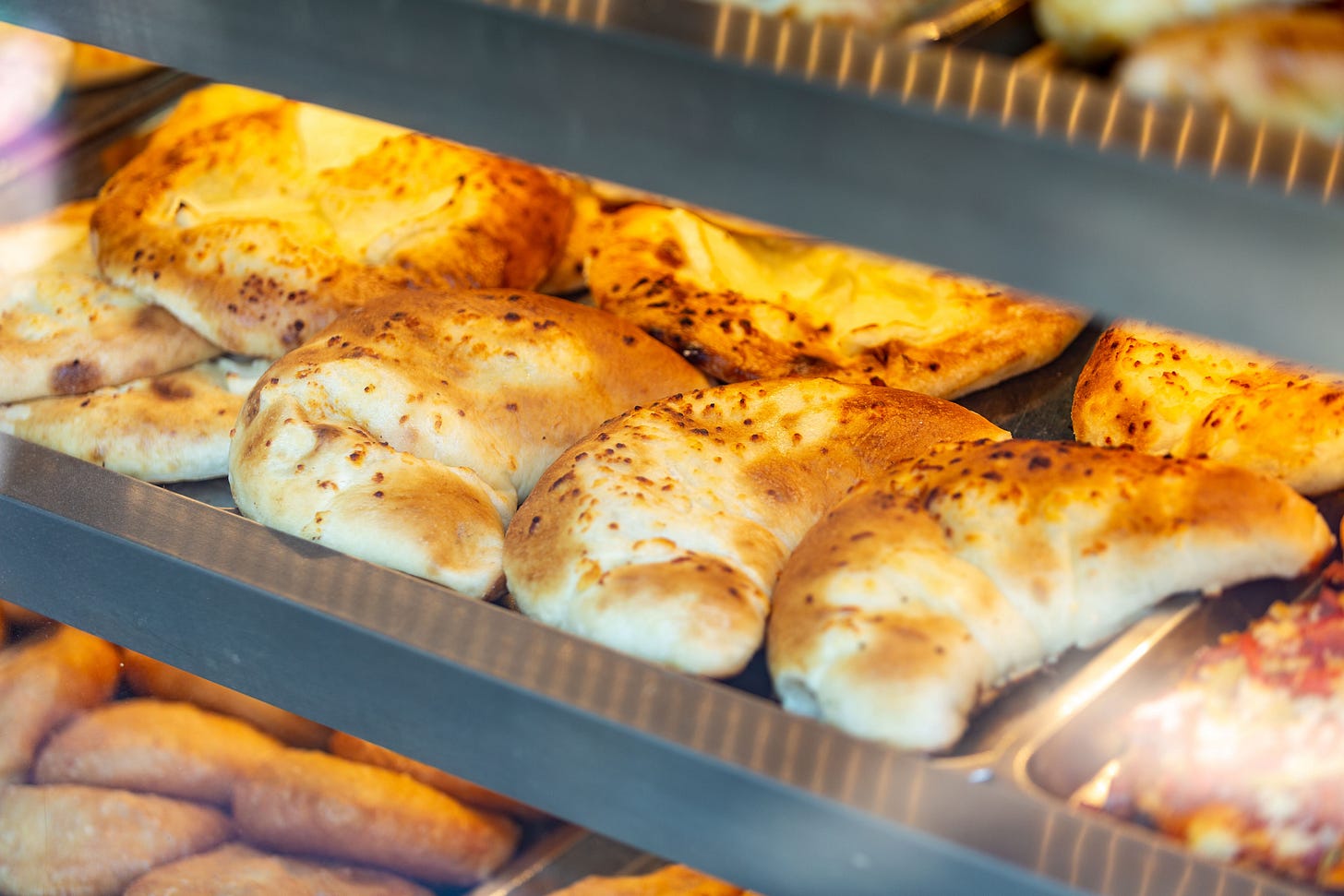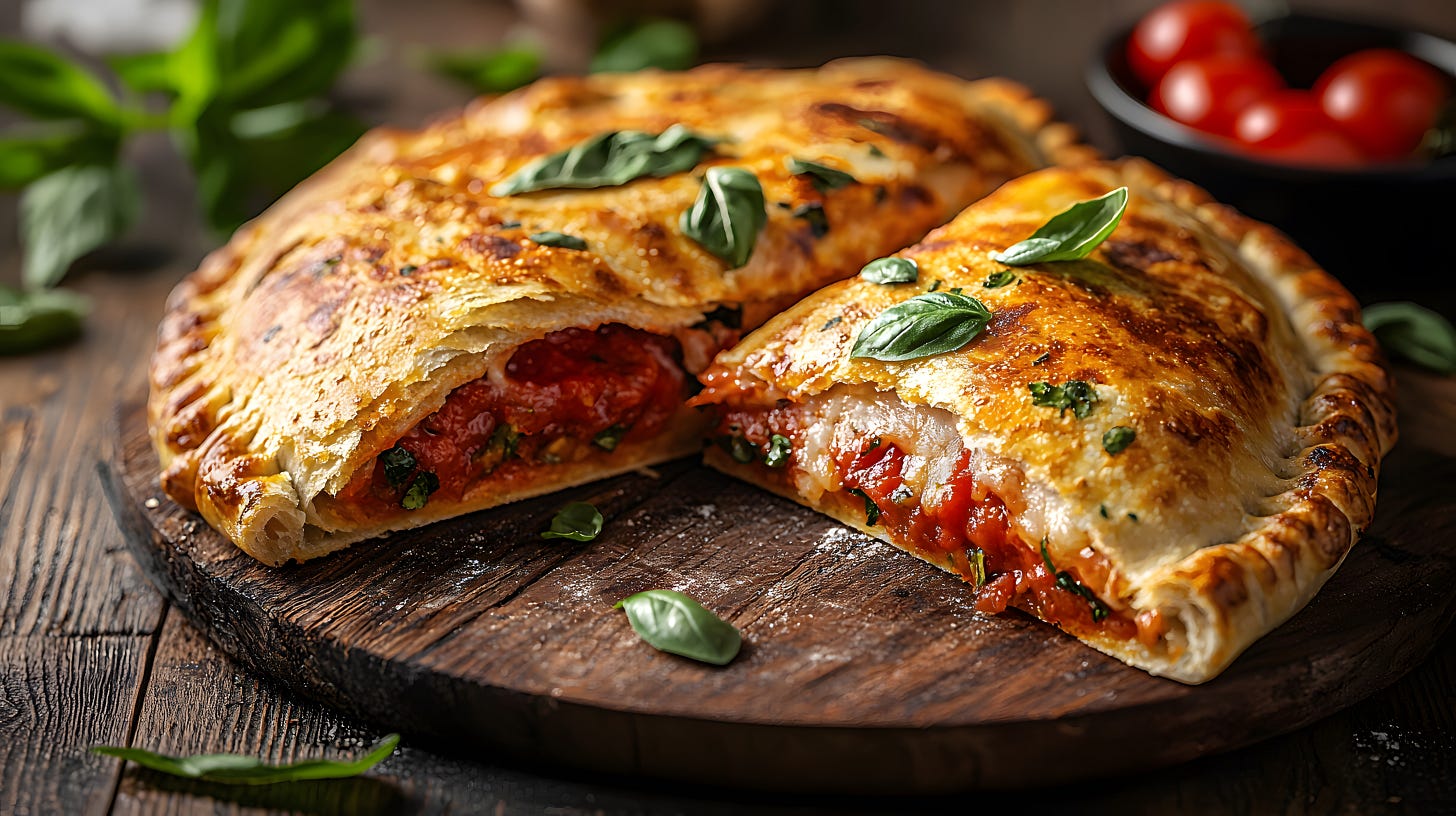Dough Me Like You Do…a Khachapuri Love Letter: Spilled Milk #302
If the words "cheese bread" don't get you hot and bothered, I don't know what will!
Are you watching my outdoor cooking show Wild Game Kitchen? New episodes air on Mondays at 7 PM ET/6 PM CT on Tastemade. Tune in next week to see me cook duck! Find recipes from the show here.
I’m sharing great promotions and savings on everything from spoons to spices. Check out the gifts and deals here!
Hot, starchy and full of cheese was enough for me to understand intellectually why khachapuri is Georgia’s cultural touchstone and a globally famous edible phenomenon. But when I first went to what is now the country of Georgia and saw all the variations of stuffed breads in Tbilisi alone, I was totally shook. I love this part of the world, its people and their food. More on the concept of “their food” in a bit. We have some history to get into concerning this classic dish. Curious? Read on.
Khachapuri is a cheese-filled bread that has become a national symbol of Georgian cuisine. Its origins are deeply rooted in the country’s history, shaped by geography, trade and centuries of culinary tradition. Georgia, positioned at the crossroads of Europe and Asia, has long been a melting pot of influences, absorbing and refining various culinary techniques from the cultures that passed through its lands. And reflexively, it’s why so many dishes like the Georgian classic exist in so many other food cultures.
The name khachapuri comes from two Georgian words: khacho (“curd cheese”) and puri (“bread”), suggesting that the dish’s foundation dates back to ancient times when Georgian highlanders needed a hearty, calorie-rich food that was easy to prepare. The dish evolved over time, with different regions of Georgia developing their own unique variations.
Khachapuri comes in many forms, each tied to a specific region and its culinary traditions:
Adjarian Khachapuri – Perhaps the most visually iconic, this boat-shaped bread is filled with molten cheese and topped with a raw egg yolk and butter. It originates from Adjara, a coastal region by the Black Sea.
Imeretian Khachapuri – A round, flatter version from the Imereti region, made with Imeretian cheese and similar to a stuffed pie. This is considered the most common type.
Mingrelian Khachapuri – Similar to the Imeretian version but with an extra layer of cheese melted on top.
Ossetian Khachapuri– These are thinner and often contain a mixture of cheese and mashed potatoes.
Rachuli Khachapuri – A version from the Racha region that includes ham in addition to cheese.
Khachapuri is part of a larger global tradition of cheese-filled bread, a concept that has emerged independently in multiple cultures, but in some cases, one may have influenced another. It does prove one thing: The combination of these ancient foods (cheese, bread) born out of a limited pantry and difficult times is more popular today than ever.
Turkish Pide – A long, oval-shaped bread filled with cheese, eggs, meat or vegetables, strikingly similar to Adjarian khachapuri.
Italian Calzone – Essentially a folded pizza, stuffed with cheese and other fillings, much like the enclosed Imeretian khachapuri.
Indian Naan with Cheese – A simple yet delicious cheese-filled flatbread, popular in Indian cuisine.
Brazilian Pão de Queijo – While not exactly the same, these cheese breads are reminiscent of khachapuri in their rich, cheesy flavor.
French Gougères – Though not a flatbread, these airy cheese puffs show how different cultures have found ways to incorporate bread and cheese into their cuisine.
Bourekas- Often made out of puff pastry with various fillings, like feta cheese, kashkaval cheese, minced meat, mashed potato, spinach and cheese, eggplant and mushrooms. Popular in the Levant, Southern Europe and Northern Africa.
Middle Eastern Manakish – A flatbread that is often topped with cheese, similar in preparation to some khachapuri variations.
Culinary history is complex and trying to pin down the exact origin of a dish is often a losing battle. Many beloved foods predate modern national borders, having traveled along trade routes, been influenced by migration and adapted over time by different cultures. The Silk Road, Mediterranean trade and colonial exchanges all contributed to the spread of culinary techniques and ingredients.
Instead of arguing about where a dish was “truly” invented, it’s more valuable to recognize how food connects us across cultures. Cuisine is a shared human experience, constantly evolving and blending across generations. While it’s important to honor a dish’s traditional roots, the joy of food comes from its ability to bring people together, rather than divide them. Even better, try making these savory pastries this week.
Recipe: Khachapuri
Keep reading with a 7-day free trial
Subscribe to Andrew Zimmern's Spilled Milk to keep reading this post and get 7 days of free access to the full post archives.














